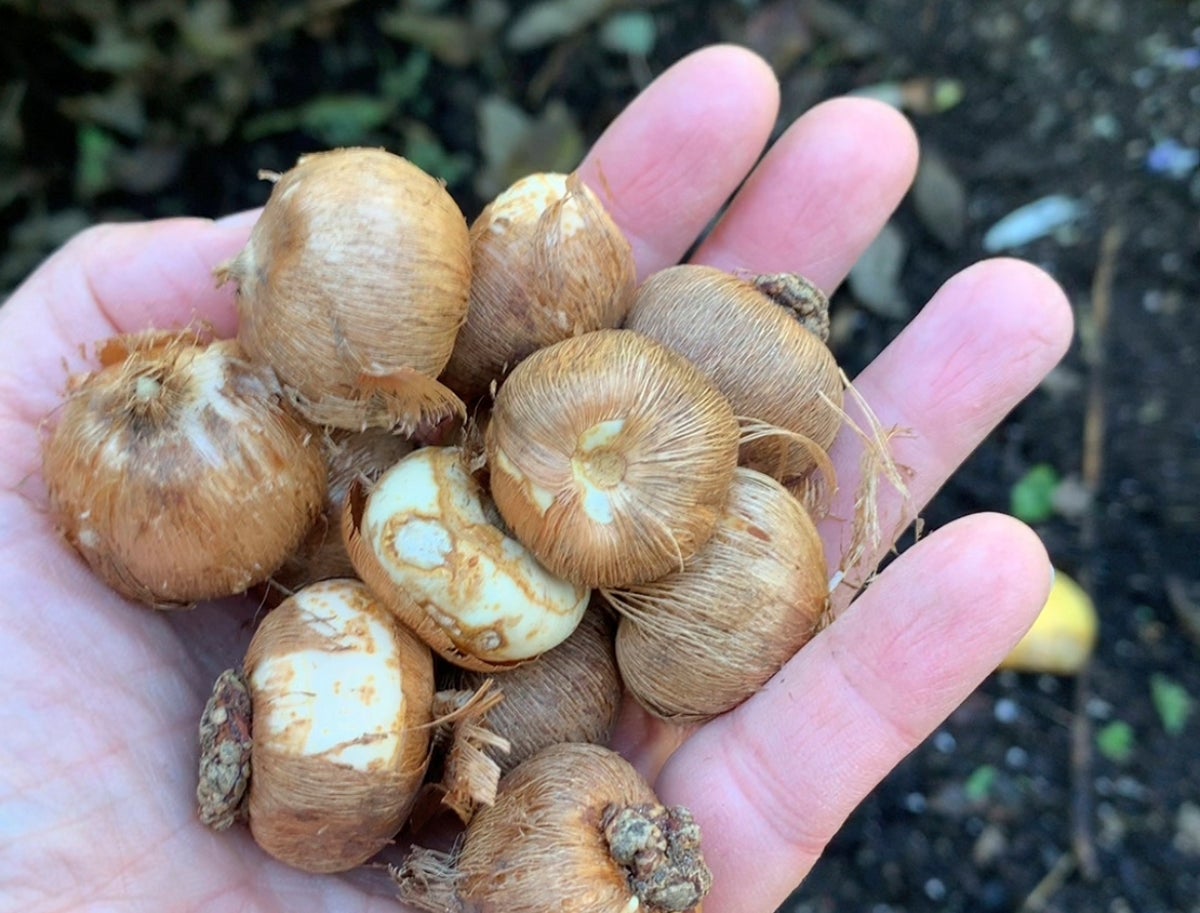
As summer turns to fall, the garden may seem to fade into the background. But there’s still plenty of action going on underground, so this is no time to rest.
For starters, your plants still need water. Although their thirst will wane as temperatures cool, perennials, trees and shrubs in colder regions actually require extra water in early autumn to help them prepare for (and successfully emerge from) dormancy.
In cooler zones, plant pansies for a dash of fall color. They’ll die down over winter but return to bloom again next spring until the heat of summer does them in. In warmer zones, the pansies will keep doing fine so long as winter temperatures don’t rise above 80 degrees.
Add other seasonal bloomers to the garden or containers, too. Chrysanthemums, asters, and colorful ornamental kales and cabbages are good choices.
You can also start planting bulbs. In areas that experience winter freezes, this means hardy ones like tulips, muscari, daffodils, crocus, hyacinths, snowdrops and glory of the snow. In the South, consider amaryllis, caladiums, calla lilies, cannas, daffodils, dahlias, elephant ears, gladiolus and tuberous begonias.
Those gardening in the southernmost parts of the U.S., like South Texas and Florida, can plant another round of tomatoes, peppers and eggplants.
There’s no need to pull up declining crops if they’re still producing. Take what you can from them until they die down on their own, then clear beds of plant debris.
Planting a cover crop such as clover or rye in vacant vegetable beds will help suppress weeds, control erosion and add nutrients to the soil. Come spring, just turn the ground over and plant your next garden. Avoid using legume cover crops in beds where you plan to grow legumes like beans or peas, however.
Dispose of diseased plants in the trash, and start a compost pile with healthy plant parts. Create layers of fresh materials like fruit and vegetable kitchen scraps, grass clippings, weeds that haven’t gone to seed, coffee grounds, cornstarch packing peanuts, horse manure, and rabbit and bird droppings. Alternate them with dry items like leaves, twigs, shredded paper and straw (never include used kitty litter, dog poop, fats, meat, dairy or other animal products).
To speed decomposition, sprinkle a bit of nitrogen over each layer and keep the pile slightly moist, turning it every so often with a pitchfork. By next summer, you’ll be able to enrich your soil with “black gold.”
To prepare for spring planting, test your soil’s pH now and add amendments like lime, if indicated, and compost, which will work their way deep into the ground over winter.
Avoid fertilizing everywhere except in the South, where some turfgrasses may benefit from an early fall application of a slow-release product. But observe local fertilizer restrictions to protect the ecosystem and prevent waste (and, potentially, fines). During the South’s rainy season, for example, nitrogen is likely to be washed through the soil into groundwater; in the North, cooling temperatures prevent the absorption of fertilizers, which also can leach into groundwater there.
Both scenarios pollute our precious resources and waste money, as unabsorbed fertilizer won’t benefit your lawn or plants, anyway.
Southern gardeners should feed citrus trees now, but not during rainy weather. Use a slow-release product to provide long-lasting nutrients and avoid leaching and runoff.
Rejuvenate the lawn, but core aerate it first. Seed once a week and water lightly every day until it’s 3 inches tall.
Transplant and divide spring- and early-summer perennials and groundcovers, but don’t disturb late-season bloomers until spring.
Fall is a good time to plant trees and shrubs. In cold zones, it’s best to wait until the trees in your area drop their leaves. Water well and apply mulch.
Cool-season crops, like beets, radishes, greens and broccoli can be planted in many temperate climes now.
Finally, do your future self a favor and keep on top of weeds. Pulling them up by their roots before they set seed will significantly reduce their numbers next year.
You’ll thank yourself in the spring.
—-
Jessica Damiano writes regular gardening columns for The Associated Press. Her Gardening Calendar was named a winner in the 2021 Garden Communicators International Media Awards. Her Weekly Dirt Newsletter won a Society of Professional Journalists PCLI 2021 Media Award. Sign up here for weekly gardening tips and advice.
For more AP Gardening stories, go to https://apnews.com/hub/gardening.







